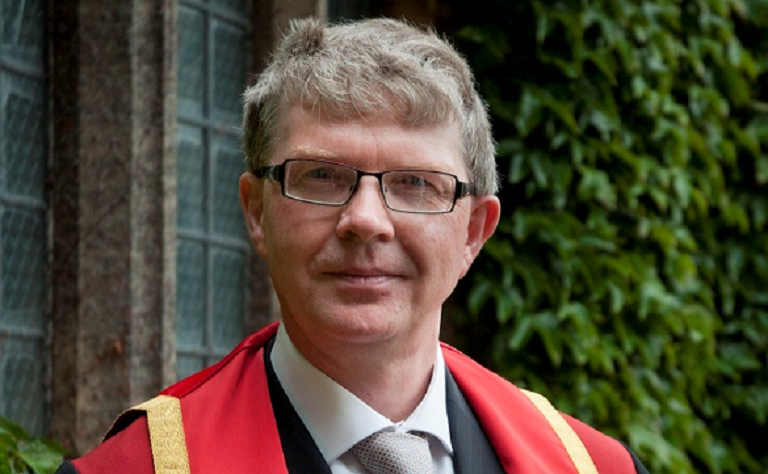10 Years of Torture Prevention: Reflections on OPCAT
16 December 2016
Tobia Charles (MSc Global Governance and Ethics) on a GGI keynote lecture with Professor Sir Malcolm Evans, Chair of the UN Subcommittee for the Prevention of Torture.

One of the key quandaries in international human rights governance is: why would states create effective mechanisms to protect individuals from violations of their rights, when these violations are more often than not perpetrated by states themselves? In the case of the Optional Protocol to the Prevention against Torture (OPCAT), which is now in its tenth year of existence, its more experimentalist framework of governance might explain how it has obtained a remarkably far reaching mandate.
The OPCAT has been ratified by 83 states, the jurisdictions of which the Sub-committee for the Prevention of Torture (SPT), the international body which implements the protocol, can visit at any time without warning. It can enter any part of any facility where it believes individuals may be being deprived of their liberty, and view any document it deems relevant to the investigation. OPCAT State Parties have also established 65 National Preventive Mechanisms (NPMs), which have a mandate to inspect detention facilities as well. NPMs are actors independent of state interest who operate on the front line of torture prevention and are often composed of a variety of actors. OPCAT boasts the most powerful and far reaching mandate of any institution within the UN human rights architecture, however, the challenges it faces are numerous. Speaking at the UCL Global Governance Institute (GGI), Sir Malcolm Evans reflected on both the OPCAT's many successes as well as the fundamental obstacles and drawbacks it faces moving forward. Evans is Professor of Public International Law at Bristol University and Chair of the SPT.
OPCAT by Design
Simply put, OPCAT marks a shift away from the 'one size fits all' legislative approach to human rights. OPCAT's approach is cooperative as opposed to condemnatory, and its emphasis on prevention goes hand in hand with its commitment to finding the most pragmatic course of action. But most importantly - Evans called it 'the jewel in its crown' - OPCAT aims to tackle issues at the national level through the NPMs, instead of in a meeting room in Geneva. In this sense, OPCAT represents a new kind of experimentalist governance, which seeks to promote the involvement of relevant stakeholders already in positions to identify and target the causal factors that help the practice of torture precipitate. In this new mode of governance periodic re-evaluation and re-examination are paramount, and power, albeit more structural than institutional, is distributed horizontally.
Evans described this horizontal distribution of power as a 'triangular relationship' between the SPT, the State, and the NPM. Central to understanding why power is disseminated evenly in this relationship is the principle of confidentiality. 'One of the great myths in human rights,' remarked Evans, 'is that you can achieve progress by naming and shaming.' Perhaps controversially, instead of publicly denouncing the perpetrators of torture, OPCAT takes a more dialogical and non-confrontational stance. Talks take place behind closed doors, seeking to specifically identify the structural causes of torture, such as under-resourcing, state corruption, or poor infrastructure, as opposed to publicly exposing instances where human rights standards more generally have been breached. According to Evans this confidentiality is the "price" of OPCAT's extraordinary scope of access, and thus a key component to its success. However, it also explains why OPCAT's achievements have largely flown under the radar.
The experimentalist framework detailed above has undoubtedly helped tackle torture more effectively. Nevertheless, in my view, in downplaying the catalytic impact of increased transparency, OPCAT's organisational model leaves little room for domestic mobilisation. As Evans recognised earlier in the day, during a seminar which he held at UCL, an 'attitudinal change' to torture and human rights violations within a society is crucial in bringing about change. Indeed, he even framed precipitating this 'attitudinal change' as part of the role of the NPM. However, it is hard to see how such a change can occur when a society is uninformed about its government's torture-related practices. What happens when states prove recalcitrant and dialogue breaks down? With limitations on accountability come constraints on enforceability, and this is something that OPCAT will perhaps need to address moving forward. It is noteworthy, however, that OPCAT forms part of a wider human rights architecture, and that there are other bodies, such as the International Criminal Court (ICC), with greater powers to hold those responsible accountable.
Strengths as Weaknesses
While OPCAT's far-reaching visiting mandate is one of its greatest strengths, it is also a significant drawback, particularly with regard to its funding. OPCAT forms part of a wider UN human rights architecture, and its budget is determined by The Office of The United Nations High Commissioner for Human Rights (OHCHR). The OHCHR's support system is used to resource human rights initiatives which strive for a meeting body output instead of efforts in the field, at a national level where protocol may be being breached. OPCAT's "field operational" approach requires a different manner of resourcing. This sentiment was captured perfectly by Evans in a statement he gave at the 71st session of the General Assembly:
"Small amounts can go a very long way in addressing the most serious violations - it is heart-breaking to see the extent of the human suffering which could be alleviated for the want of the cost of a couple trays of canapes served at a diplomatic reception. I cannot help but observe that there often seems to be more money available to discuss problems than there is to address them."
If OPCAT is to survive it will require the OHCHR to tailor its funding to suit OPCAT's 'hands on' pragmatic approach to torture prevention. One of the key tenets of Evans' talk at the GGI was that, contrary to popular belief, the biggest impediment to OPCAT's development is not the 'intransigence of the states', but the 'bureaucracy of the office'.
Exacerbating the issue of resourcing further is the need for periodic re-evaluation, dialogue in the months and years that follow the SPT's visit to a state. The SPT aims to provide a 'tailored road map' for every country it visits. Such methods achieve progress incrementally and gradually, and not only do they require more funding in the long term, but also an immediate expansion in OPCAT's administrative capacity. This has the potential to become a very serious issue as OPCAT continues to add to the jurisdictions in which it can operate.
Another way in which OPCAT may be flawed by its very design, is that signatories could discontinue their funding for the NPMs as OPCAT makes progress in tackling torture in certain regions. After all, especially in more autocratic regimes, torture is not always practiced out of failure to provide appropriate conditions for human incarceration, but as a deliberate method of consolidating power through spreading fear. It is not hard to envisage in this era of political upheaval a scenario where a state may abandon its international commitments to OPCAT so that it may exercise torture to further its own interests, especially when major global powers like the United States, who portray themselves as purveyors of human rights, are yet to ratify the protocol.
Concluding reflections
Despite the array of challenges OPCAT faces, as a body it is still in its infancy, and thus it continues to discover and explore new departures and pathways to torture prevention. A point of particular interest from Evans' talk was that even in the systems that are generally regarded to be the most transparent, OPCAT can draw attention to potential problems. For instance, in the UK, OPCAT has highlighted the fact that conditions in police custody are only subject to 'independent oversight' by other police forces, which of course seems to be an incredibly inappropriate arrangement. Highlighting such inconsistencies in jurisdictions where one would presuppose OPCAT's involvement to not be as necessary not only forms an interesting point of departure moving forward, but is key to strengthen its already far reaching mandate and cementing its reputation as a protocol that shares its attention across the global north-south divide, to the developed and the underdeveloped, the democratic and the autocratic.
The model on which OPCAT operates is one that could also prove effective in other human rights issue areas, particularly those which have fewer resourcing implications and require context specific dialogue at a national level. For example, freedom of religion, a topic that is especially important to Evans, would undoubtedly benefit from this more managerial, context specific, and relational multi-stakeholder approach.
It is difficult to avoid mentioning President-elect Trump's potential effects on OPCAT's future as currently, at 12 to 13%, the US provides a considerable proportion of the OHCHR's budget (which in turn funds OPCAT). This figure is likely to fall as Trump prioritises domestic issues over international humanitarian concerns. This could lead to a 'race to the bottom' with other states following the US's example, and abandoning their financial commitments to international human rights despite the reputational costs involved. Evans argued that if OPCAT continues to expand so will its need for financial support. Politicians may then seek to extend their influence into the protocol as a trade-off for funding - Evans was clear that this is was not a price worth paying under any circumstances.
In many ways, OPCAT's successes reflect a wider reorientation in global governance models where fixed rules are being substituted for rolling processes which favour political pragmatism. This approach has helped OPCAT achieve its key success, which is conceptualising and promulgating the idea of prevention in a human rights framework, i.e. the idea that human rights should be tackled at a causal level instead of in reaction to violations that have already occurred.
 Close
Close


